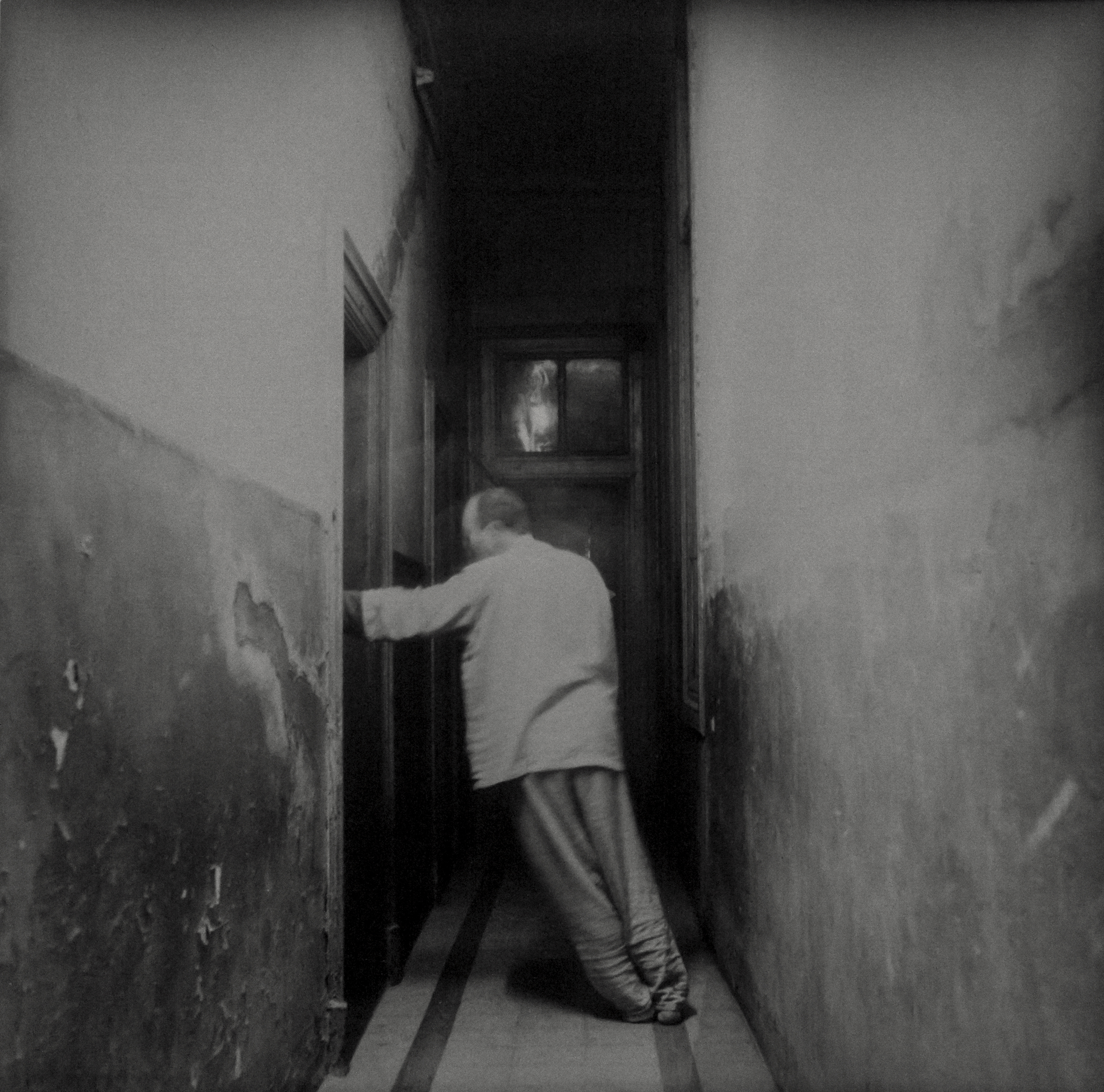Bernard Guillot (1950-2021) was a French painter and photographer who traveled extensively in Europe, the US, and the Middle East in the mid-1970s, when he had his first contact with Egypt. He graduated from the l’École nationale supérieure des beaux-arts in Paris in 1975, and then lived in New York from 1975 to 1977, where he completed his national service at the French Embassy. During this time, he was influenced by the New York urban scenes and art scene, and photography became his primary medium.
He returned to Egypt in 1977 as a young artist and maintained a residence and studio in the Belle Époque Hôtel Maffet-Astoria in downtown Cairo, where he created much of his work for many years. His work in Egypt, particularly that of the Hôtel Maffet-Astoria, earned him recognition, including the Prix Nadar in 2003 for his book Le Pavillon Blanc (The White House), published by Filigranes Editions, which chronicled his extraordinary life in the rooms and corridors of that downtown Cairo pension through deeply haunting images. Of the Maffet-Astoria, his atelier, he says, “we arrive at a place of self, that takes the form of a hotel”.
His interests also took him on adventures throughout the city. A small series of photographs, acquired by the Centre Pompidou, entitled Cimetière juif du Caire, 1977-78 (Jewish cemetery), reveals his eye for strong compositions reminiscent of Egyptian architectural style.

Silver gelatin print / Courtesy of TINTERA
For Guillot, Cairo and Egypt as a whole became a place of deep inspiration both personally and artistically, so much so that it became a second home for the rest of his life. During his years in Cairo, he exhibited his paintings and photographs in various galleries and produced a number of exhibition catalogues. He made long-lasting friendships with other artists and travelled the countryside recording his experiences with his friends. Many of these encounters indirectly appear in his work as Guillot’s approach was not about direct representation but rather about what lay beyond the surface—the metaphysical and etheric, the symbolic and mystical.
He saw with another eye, not merely the light and shadow of the physical world but rather what emanated from physical form. Egypt provided the scenes and friendships that were to be experienced, both visceral and emotional, and photography and painting were his constant companions, recording these floating moments. His practice was intimate and truthful, deep and revealing—a language of vibration not of words. In his writings, he wrote as if in a stream of consciousness, his images and words resonating with each other in handmade artist books from old books found in Cairo flea markets that he brought to his studio, layering each page with his thoughts and images.
He was not concerned with one photographic ‘style’ and yet his work is distinguishable as one long continuum of exploration and revelation. He printed his photographs in his darkroom in Paris every summer, not caring for technical precision but rather accepting the wonderful surprises that the process would offer. He would then collect the prints in folders in his studio, only to return to them years later when he would paint directly onto them with gouache and India ink, a layer above the original image, teasing out elements of “the unseen world” that could now complete his vision. These painted photographs transport the viewer directly into the otherworldly realms in which Guillot lived and worked.
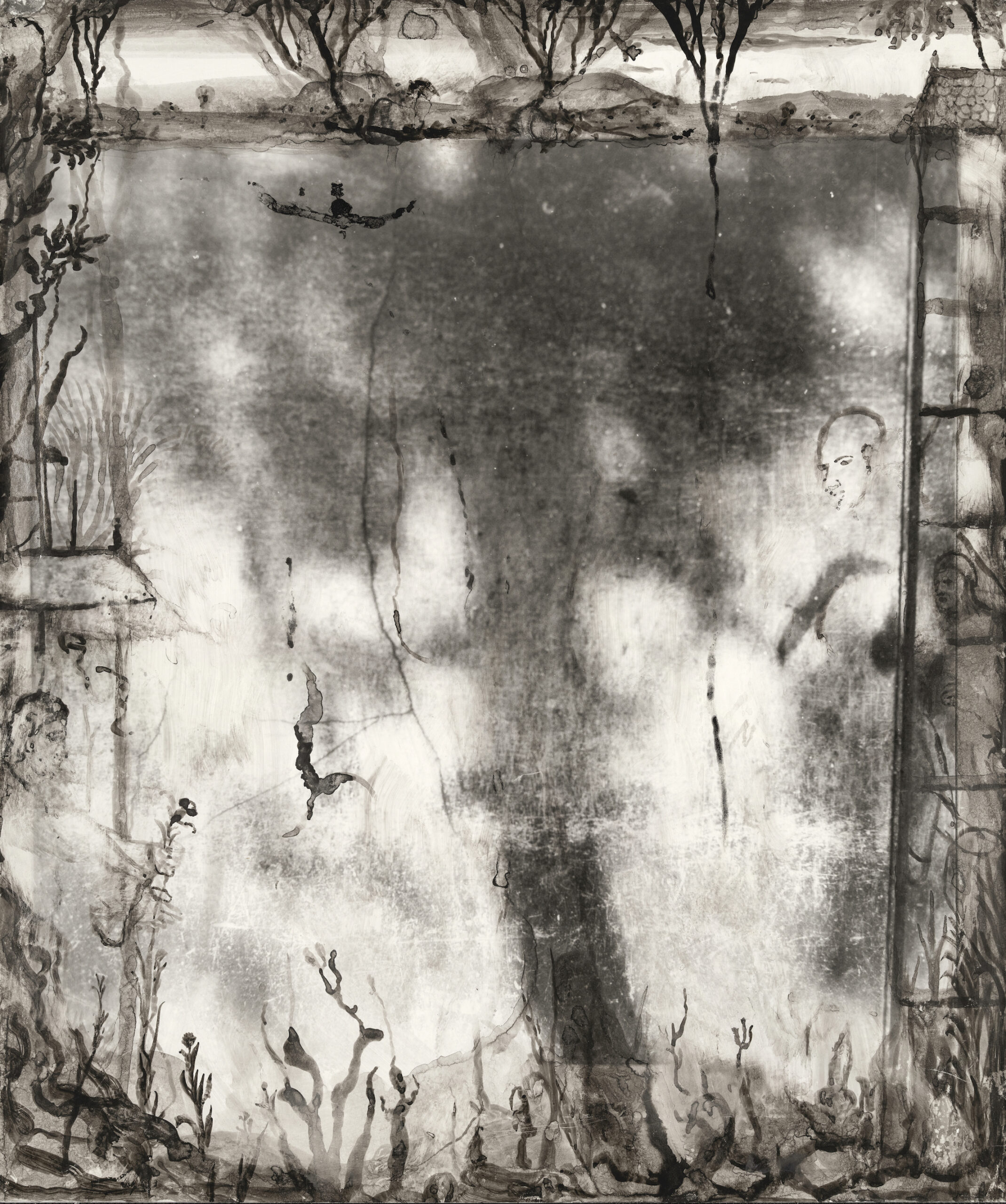
Hand-painted silver gelatin print / Courtesy of TINTERA
In early 2020, we were fortunate to have presented Guillot’s first survey exhibition of his Egyptian photographs at Tintera gallery in Cairo with a selection of hand-painted photographs made over the decades. Many of the photographs were signed with periods of time rather than specific years, emphasising how his work unfolded gradually.
We are especially honoured to represent the unique works by Guillot at Paris Photo in November of this year, with a focus on the one project that consumed him to the last moment: City of the Dead / Cité des morts / Nécropole du Caire, 1977-2017—a body of work that reflects Guillot’s continuous observation of this site for over 40 years.
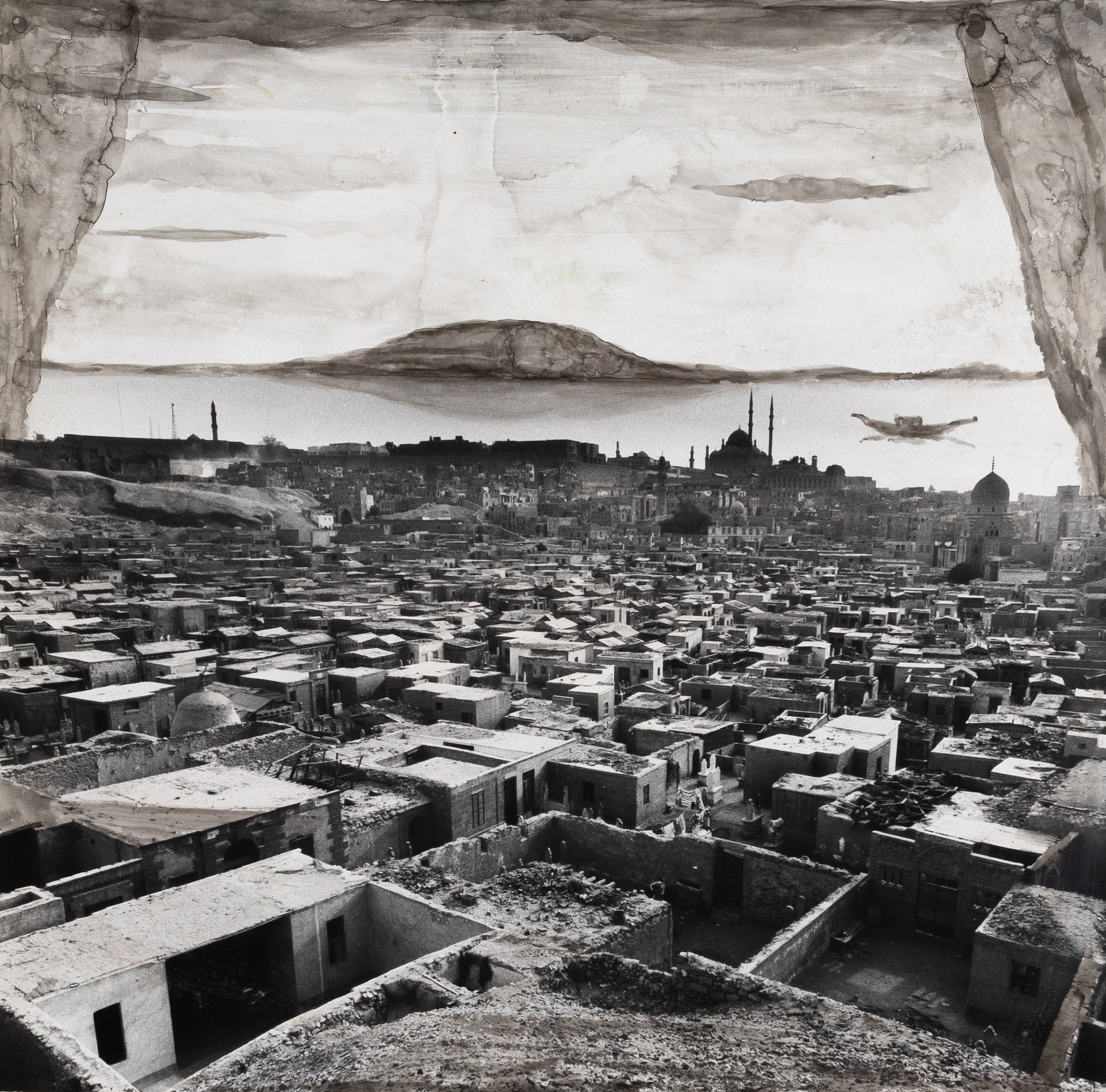
Hand-painted silver gelatin print / Courtesy of TINTERA
The series examines the alleys and structures, the textures and spaces, of a living necropolis, where thousands of families live and caretake the tombs and mausoleums lying in the heart of medieval Cairo. Dating back to the 7th century, this vast area was made famous in the 19th-century photographs by Maxime Du Camp, Félix Bonfils, and Pascal Sébah. For Guillot, the City of the Dead / Cité des morts acts as a mirror to the city of the living and represents some of his earliest memories and attraction to Cairo since his arrival.
Making a book of this series occupied his mind until his passing in the summer of 2021. From his vast body of work, we assisted him during his last months in Cairo to envision the selection of images and miniature paintings that would later unfold into a beautiful ode to a place that fascinated him for decades. After his passing, we held the responsibility of seeing that the book came to light.
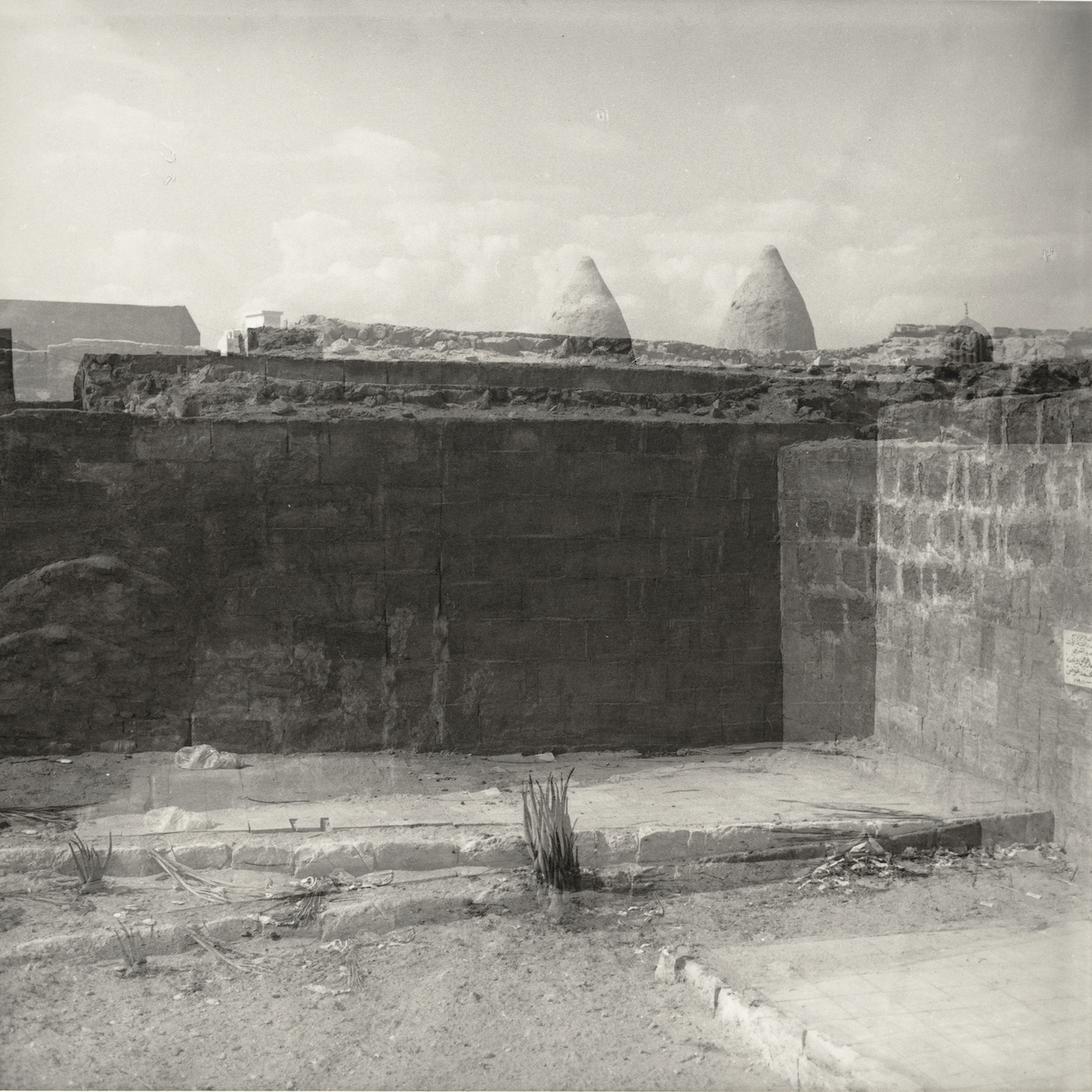
Silver gelatin print / Courtesy of TINTERA
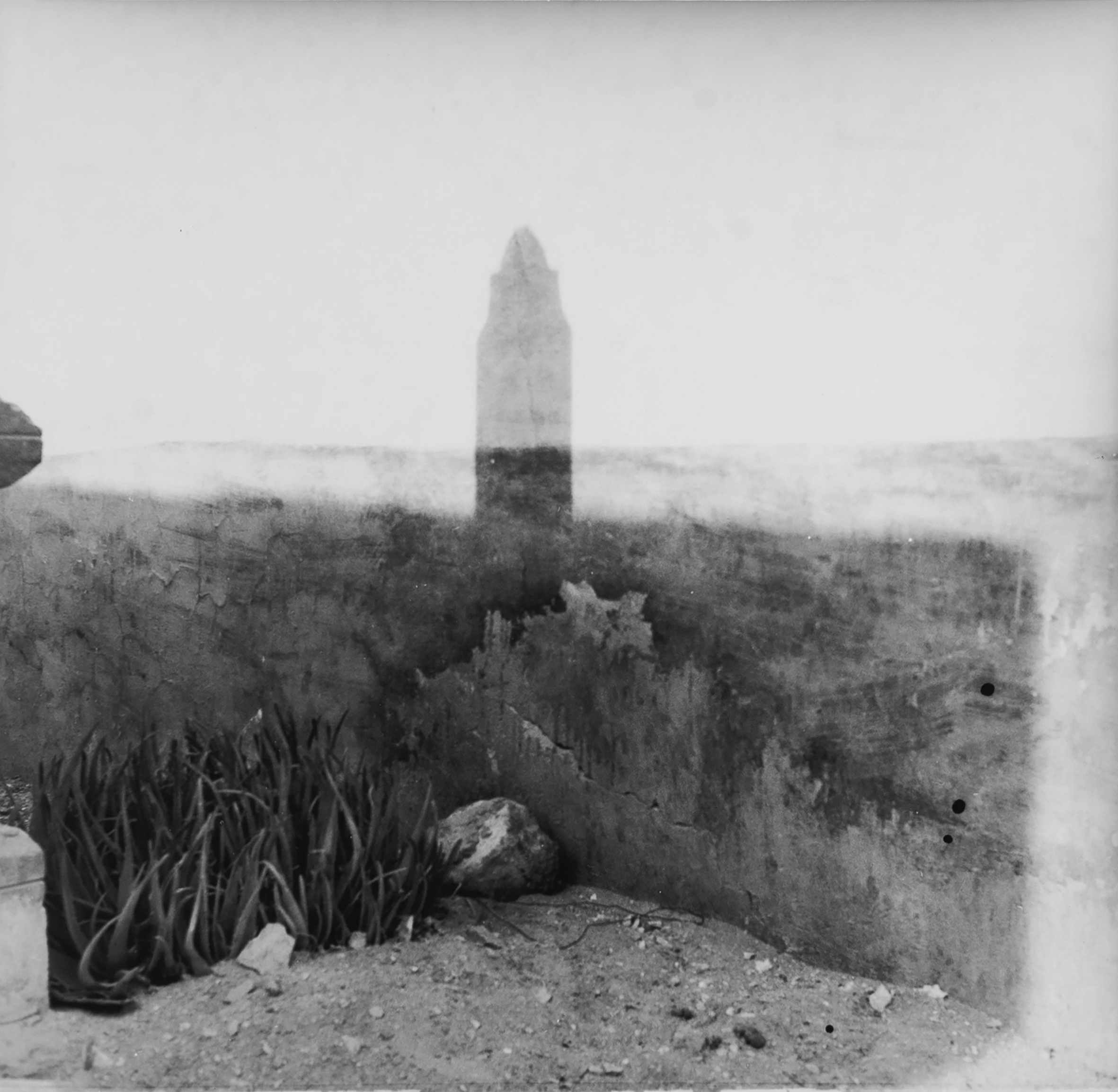
Silver gelatin print / Courtesy of TINTERA
Guillot says about the work, ‘For years, I would escape the small labyrinth which is the hotel to win the big labyrinth which is the city of the dead, spread without limit at the junction of the city and the desert. I became an anonymous priest of this place working with my camera, registering to be able to show, which is a unique place in the world, about the relation between the dead and the living, it is protected and alive, discreet and spectacular. It is beyond the mirror. To be explored in an occidental way will fail. It is more or less complete as a series. It helped me to live, since I started at 28 years old. It is a testimony of a place, of myself, of time.’
(From a conversation we had at his Paris home and studio in August 2019.)
Bernard Guillot – City of the Dead / Cité des Morts / Nécropole du Caire, 1977-2017 on display with TINTERA at the VOICES sector at PARIS PHOTO, November 13-16, 2025, at the Grand Palais.
LA CITÉ DES MORTS by Bernard Guillot, 2024, is published by Origini edizioni.
Co-founded by Heba Farid and Zein Khalifa in 2019, TINTERA is the only private gallery in Egypt dedicated to fine art photography. With a gallery in Cairo and an office in London, TINTERA’s aim is to raise the profile of contemporary and historical photography in and of Egypt through a programme of exhibitions and events and advises on the acquisition and sales of photography.
TINTERA GALLERY

